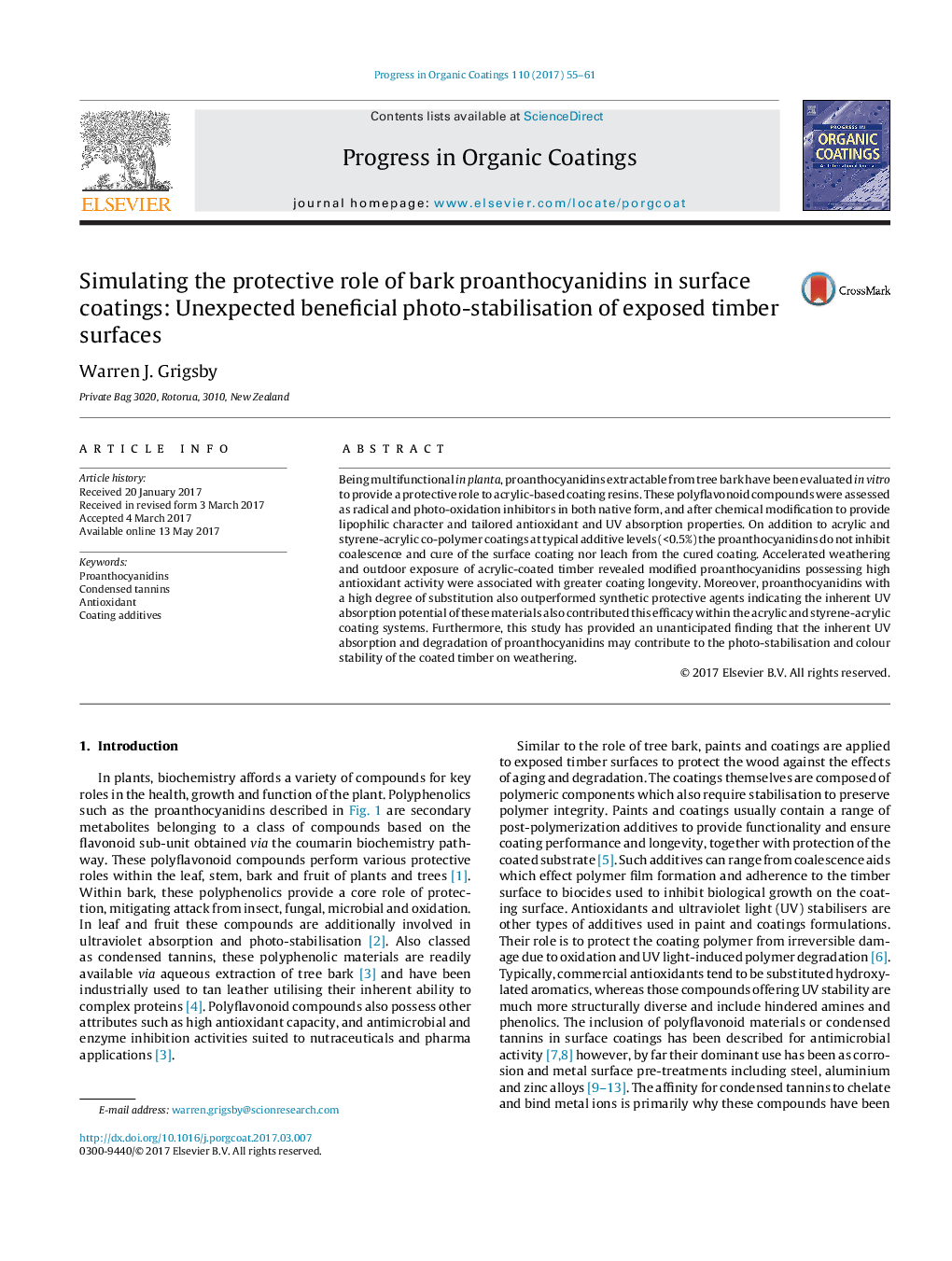| Article ID | Journal | Published Year | Pages | File Type |
|---|---|---|---|---|
| 4999214 | Progress in Organic Coatings | 2017 | 7 Pages |
Abstract
Being multifunctional in planta, proanthocyanidins extractable from tree bark have been evaluated in vitro to provide a protective role to acrylic-based coating resins. These polyflavonoid compounds were assessed as radical and photo-oxidation inhibitors in both native form, and after chemical modification to provide lipophilic character and tailored antioxidant and UV absorption properties. On addition to acrylic and styrene-acrylic co-polymer coatings at typical additive levels (<0.5%) the proanthocyanidins do not inhibit coalescence and cure of the surface coating nor leach from the cured coating. Accelerated weathering and outdoor exposure of acrylic-coated timber revealed modified proanthocyanidins possessing high antioxidant activity were associated with greater coating longevity. Moreover, proanthocyanidins with a high degree of substitution also outperformed synthetic protective agents indicating the inherent UV absorption potential of these materials also contributed this efficacy within the acrylic and styrene-acrylic coating systems. Furthermore, this study has provided an unanticipated finding that the inherent UV absorption and degradation of proanthocyanidins may contribute to the photo-stabilisation and colour stability of the coated timber on weathering.
Related Topics
Physical Sciences and Engineering
Chemical Engineering
Process Chemistry and Technology
Authors
Warren J. Grigsby,
